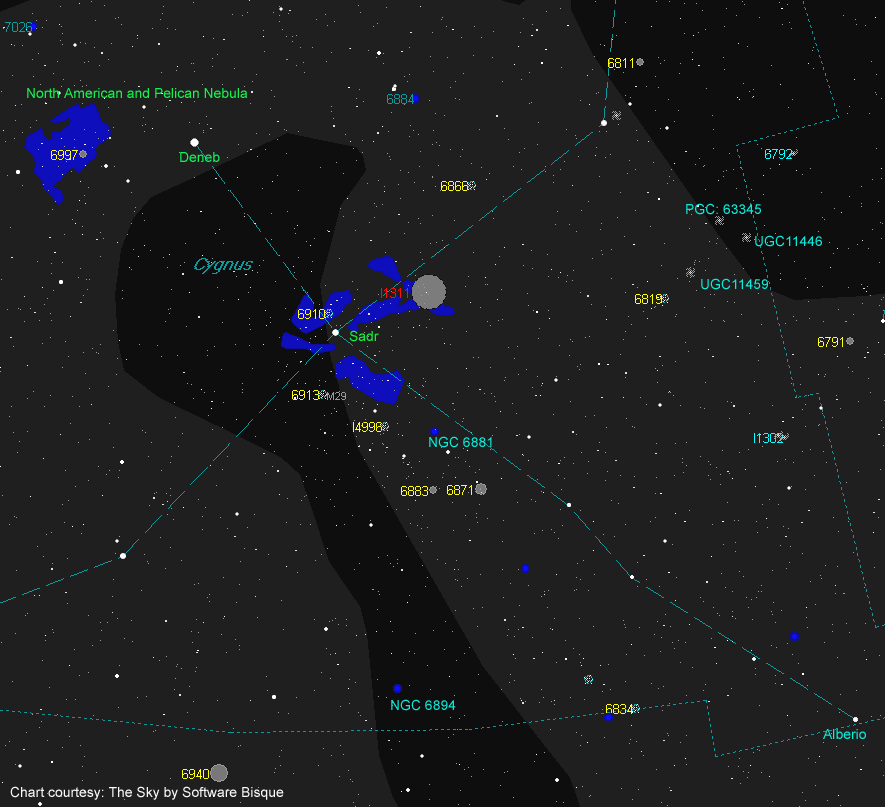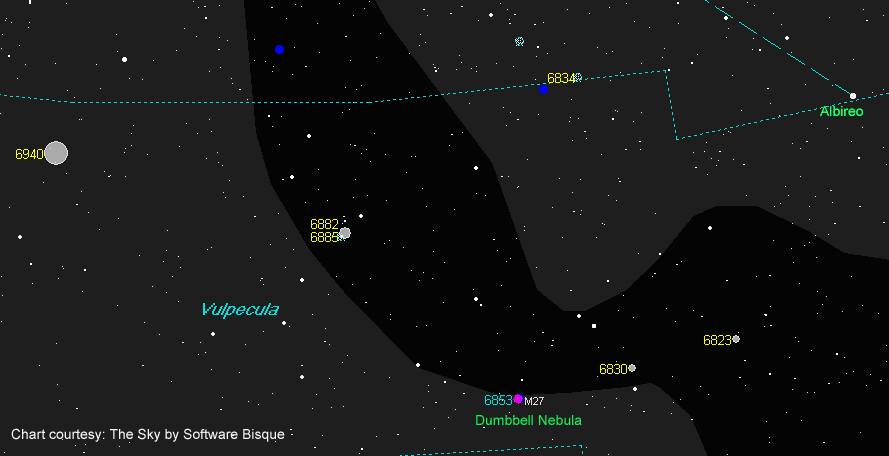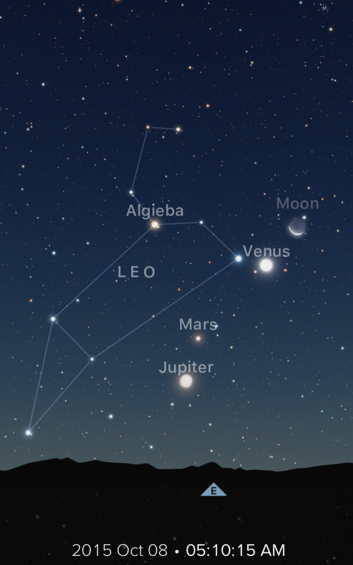The Swan and the Fox
Step outside on these cool autumn nights about an hour after sunset on a clear night and look up. Cygnus the Swan is also known as the Northern Cross is well-positioned overhead and easily recognized. The faint glow of hundreds of millions of stars, too dim to be distinguished individually by the human eye, is seen along the long neck of the swan is the perfect guide when attempting to glimpse the galactic arms of our Milky Way Galaxy from light-polluted suburban skies.
Follow this veil of starlight low to the southwestern where the planet Saturn can be found a few degrees above the horizon and sinking into the twilight. You will have a few weeks to observe the ringed planet before losing it in the solar glare. The very slender crescent moon will be positioned to the right of Saturn on the 15th and to the left the following night and make for some photographic moments. Cygnus is one of three asterisms making up the famous summer triangle. These three points are Deneb – the tail of the Swan, Vega – the brightest star of Lyra the Harp and Altair – the Alpha star of Aquilla the Eagle.

Located a little northeast of Deneb are the North American and Pelican nebulas. These appear as two distinct objects but are actually the same. An interstellar dust cloud absorbing starlight is located between us and the two objects. This cloud obscures part of the region giving the shapes we see and enjoy. The North American (NGC 7000) measures four full moons across but is too dim to be found with the unaided eye. Wide-angle binoculars or photography is the way to go. Same story for the Pelican Nebula (IC5010). Both are about 1,800 light-years away.
The head of the mythological swan named Alberio is located 386 light-years from us and a premier example of a double star and star colour. Except for carbon stars that appear red, stars, for the most part, look white when looking with the unaided eye. The story changes when peering through the eyepiece of a telescope. The finest example of star colour is the head of the swan. Albireo which consists of a magnitude 3.3 yellow star (which in itself is a binary star) along with the magnitude 5.5 blue star making this a favourite target at star parties.
Astronomers are still uncertain if this is an optical (line of sight) or a true binary where they are gravitationally bound. If the latter, their orbit might be as much as 100,000 years. Another technique of discerning star colour is photography. Take a DSLR camera mounted on a tripod and set the ISO to 1600. Defocus the star to a circle rather than a dot. Taking a 30-second exposure or longer will result in bloated but colourful stars.

Magnitude 2.2 Sadr is located at the centre of the swan’s wings and is a spectral class F8 supergiant star. Sadr is located 1,832 light-years away and now at the end of its life has swelled in size comparable to the orbit of Venus. The area rich in nebulosity surrounding Sadr is the Gamma Cygni complex. These vast clouds of interstellar dust and gas reside deep in the Orion Arm of the Milky Way and twice as far as Sadr. From here, move your scope less than three degrees down the swan’s neck to Albireo until you locate the Crescent Nebula (NGC 6888). This is the result of the extremely powerful Wolf-Rayet star (WR 136) and its 2,000 to 3,000 km/second winds colliding with the older, cooler and slower-moving winds. This interaction causes fast-moving gas to glow. It is casting off its layers at the rate of our sun’s mass in 10,000 years.
Directly south of Cygnus is Vulpecula the Fox. It is a moderate size constellation with 268 square degrees of sky making it 55th in overall size. There are a few interesting objects such as the combination of NGC 6820 and NGC 6823, also known as Sharpless Sh 2-86. At a distance of 6,000 light-years, NGC 6823 is a magnitude 7.1 open cluster surrounded by the emission nebula The pair is found five and a half degrees east of Alberio.
For our next object, move your telescope a little less than two degrees NE until you come across the sparse open cluster NGC 6830. It is 5,300 light-years away and is listed at magnitude 7.9. NGC 6830 measures twelve arc minutes area and might be a change to see against the Milky Way background. Now keep moving in the same direction to the Dumbbell Nebula. M27 is another favourite at star parties. This planetary nebula resides 1,600 light-years from Earth and is magnitude 7.5. Here we see the remains of a star that died 14,600 years ago and the outer shell is still expanding at 2.3 arc seconds per century.

If you are awake about an hour before dawn and look east, you will see a trio of planets and a star that is somewhat lined up at the beginning of the month. Starting from the horizon we have Jupiter, Mars, the star Regulus and finally brilliant Venus. Keep watching these three planet jockey position during the month. On the morning of the 8th the thin 18% waning crescent moon will be close to Venus. When the moon rises at 2:52 a.m., the star Omicron Leonis will be occulted, eventually cresting over moon’s right limb around 3:38 a.m. EDT. This occultation reappearance is favoured for eastern Canada.
The South Taurid meteor shower peaks on the 10th with only five meteors per hour. Start looking for the zodiacal lights in the eastern sky before morning twilight. The zodiacal lights are a result of sunlight reflecting off the dust that circles the inner solar system. They are seen in the autumn and spring. New Moon (lunation 1148) occurs on the 12th and the Full Hunter’s Moon occurs on the 27th at 12:05 UT.
Until next month, clear skies everyone.
Twitter: @astroeducator
